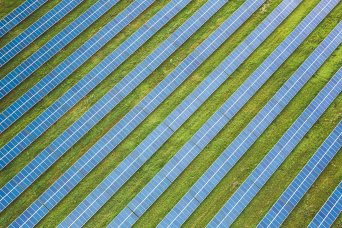- About
- Topics
- Story
- In-Depth
- Picks
- Opinion
- News
- Donate
- Signup for our newsletterOur Editors' Best Picks.Send
Read, Debate: Engage.
| topic: | Energy |
|---|---|
| located: | India |
| editor: | Bindu Gopal Rao |
India is the third-largest consumer of energy in the world and has aggressively taken on the goal of providing electricity for all residential users, especially in remote rural areas. This will inevitably cause a surge in the country’s demand for electricity. Nevertheless, the country has announced an ambitious plan to achieve net-zero carbon emissions by 2070, setting the need for infrastructural change.
As per a report published in Invest India, the country’s renewable energy sources, including hydropower, have a combined installed capacity of 163 gigawatts (GW). The report also states that India’s target is “to produce 5 [megatonnes] of green hydrogen by 2030. The cumulative value of the green hydrogen market in India could reach $8 billion by 2030 and India will require at least 50 gigawatts of electrolysers or more to ramp up hydrogen production.”
The 2022 Union Budget has made an additional allocation of 195,000 million Rupees ($2.35 billion) towards a solar Production Linked incentive scheme and the introduction of sovereign green bonds in public sector projects. It has also stated that between five and seven percent biomass pellets will be co-fired in thermal power plants, saving 38 MMT of carbon dioxide annually.
Installed renewable power generation capacity has gained pace over the past few years, growing by 15.92 percent annually between 2016 and 2022. India is the market with the fastest growth in renewable electricity, and by 2026, new capacity additions are expected to double.
However, there are some hurdles that need to be addressed. Firstly, India must assess how to expand reliable energy access while keeping it affordable for consumers and ensuring financial stability for electricity distribution companies. India must also figure out how to integrate the increasing proportion of renewable energy in a secure and reliable manner while reducing emissions to achieve climate objectives and meet economic goals.
Financial and technological challenges could impede India from achieving its goals, and the hikes in service and import taxes on solar panel components may only add to the project cost. The ambitious project also comes with the cost of adopting new technology where there is a need for enhancing grid management. Also, storage solutions and exporting solar energy to places where it is needed are some issues for which there are no ready-made answers - at least for now.
To address many of these obstacles, the country needs to look at a combination of foreign direct investments (FDI), domestic investments, and providing financial incentives. While there are policy measures in place, the ambitious energy targets can only be achieved with a concerted effort to put these resources together to make a positive impact. And how that will be done, is something only time will tell.
Photo by Markus Spiske

